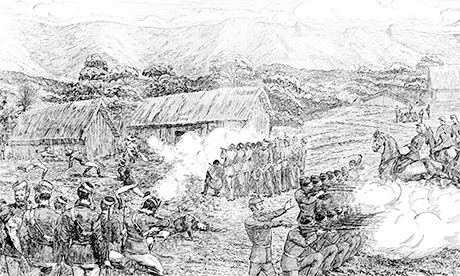The New Zealand Wars (1845–72) had a decisive influence over the course of the nation’s history.
Yet Pākehā have not always cared to remember them in anything approaching a robust manner, engaging at different times either in elaborate myth-making that painted the wars as chivalrous and noble or, when that was no longer tenable, actively choosing to ignore them altogether.
More recently there are signs of a greater willingness to face up to the bitter and bloody realities of these conflicts. For many Māori, that is not before time.
If a turning point in Pākehā remembrance could be identified, then perhaps it might be the petition organised by students from Ōtorohanga College that led to a national day of commemoration for the New Zealand Wars: Rā Maumahara.
In 2014, students from the school, some as young as 15, visited nearby Ōrākau and Rangiaowhia.
The group was led by kaumātua who were descendants of the survivors. At each site, they recounted what took place during the invasions and the ongoing impact on hapū and iwi.
These stories had a profound effect on the students and their teachers, not least because the events in question took place in the Waikato, where they lived. Yet very few Pākehā seemed to know anything about them.
These silences weighed heavily on the young people.
They responded by starting a petition which called on the government to officially acknowledge the New Zealand Wars in a national day of commemoration and also to introduce local histories and studies of these conflicts into the school curriculum.
The petition, signed by more than 12,000 people and presented to Parliament in December 2015, attracted a groundswell of support from others who were also troubled by these silences.
In August 2016, the government announced that a national day of commemoration would be established (although not as a statutory holiday).
The first Rā Maumahara was hosted by Te Tai Tokerau iwi at Kororāreka in March 2018.
But the government’s willingness to acknowledge the wars did not extend to the school curriculum. Continue reading
